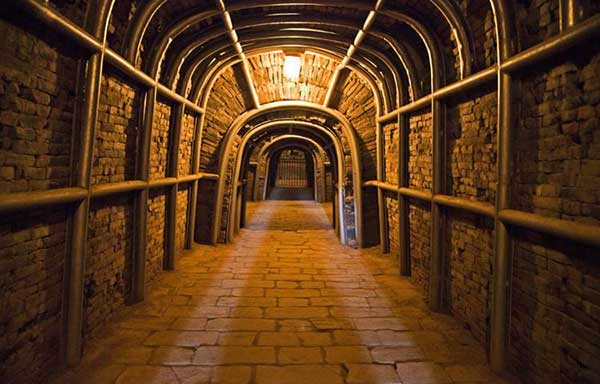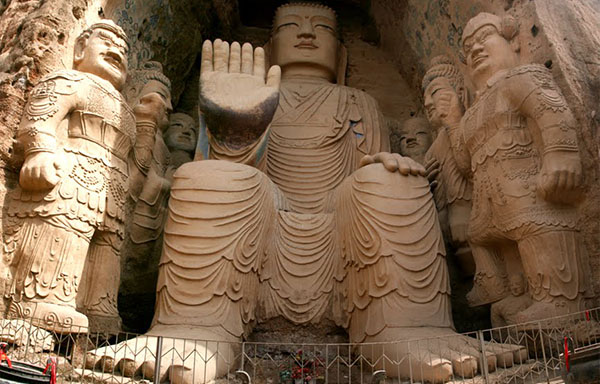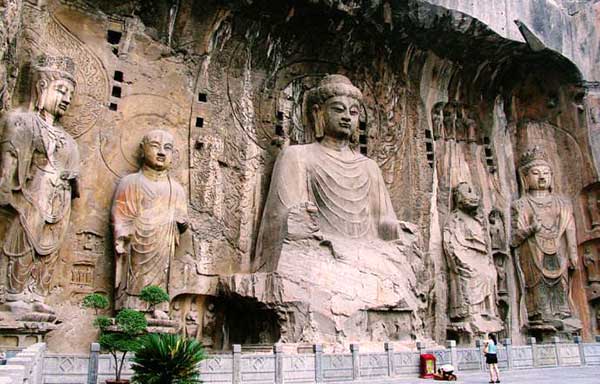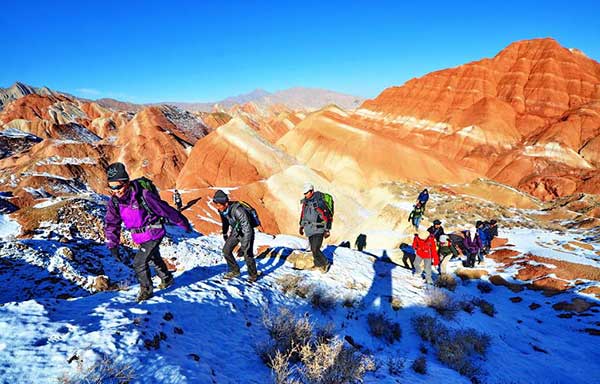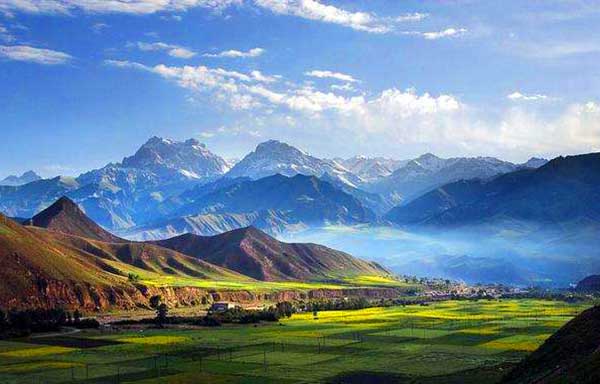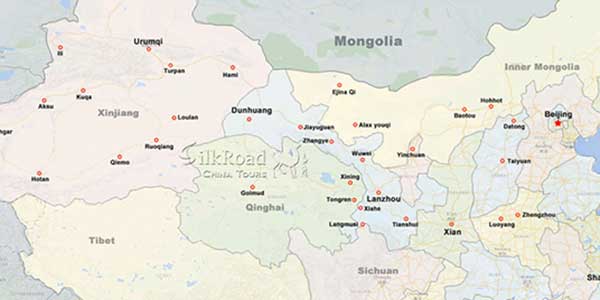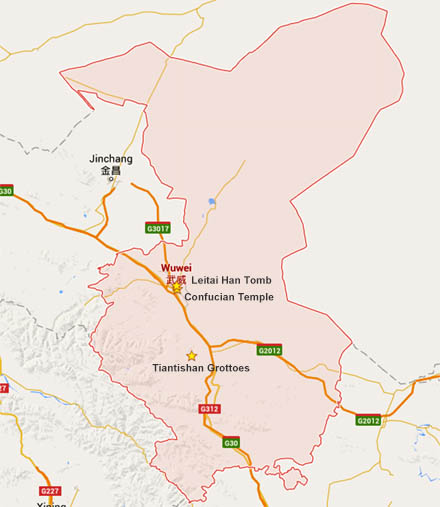 Tiantishan Grottoes, also called Big Buddha Temple, were chiseled during the East Jin and 16 Kingdoms Period, over 1,600 years ago. Tiantaishan, meaning Sky Ladder Mountain, is so named because the narrow stone path ascending to the mountain's high peaks looks like a suspended ladder..
Tiantishan Grottoes, also called Big Buddha Temple, were chiseled during the East Jin and 16 Kingdoms Period, over 1,600 years ago. Tiantaishan, meaning Sky Ladder Mountain, is so named because the narrow stone path ascending to the mountain's high peaks looks like a suspended ladder..
The Grottoes were first chiseled during the East Jin Dynasty with artists from North Wei, Sui, Tang, West Xia dynasties contributing to them. They served as a lama temple during the Ming and Qing dynasties. The grottoes have been damaged during earthquakes throughout history, because the earth in the area is especially soft. The large earthquake which occurred in 1927 damaged the grottoes in ten different places. In 1959, to make way for the construction of a reservoir at the grottoes site, part of the sculptures and paintings in these grottoes were removed to Gansu Provincial Museum, and the inscriptions and silk paintings from the North Wei and Sui and Tang dynasties were carried to Dunhuang and have since been kept at Dunhuang Cultural Relic Research Center.
The remaining grotto clusters contain seventeen grottoes in three stories. The biggest grotto is 30 meters high, 19 meters wide and 16 meters deep, in which a sculpture of Sakyamuni is housed. The sculpture is 15 meters high, and 10 meters wide. On the right and left sides of Sakyamuni are sculptures of Manjusri, Samantabhadra, Virapaksa, Vaisramana, Kassapa Thera and Ananda. On the south and north walls are two huge paintings. The upper part of the painting on the south wall bears images of a spotted deer and an elephant carrying a volume of bright scripts. The lower part of the painting depicts a ferocious tiger among plants and flowers. The background of the painting was engraved with clouds and black dragons. The upper part of the north painting is similarly engraved with black dragons, while the middle is engraved with a white horse with dazzlingly inscriptions on its back, a black tiger and a tree of Buddha. The lower part contains peony flowers. The two paintings are vividly painted, and although they were made thousands of years ago, the colors applied are still bright.
Features: Tiantishan Grottoes are the earliest chiseled grottoes in China, and are representative of the art of China's earliest grottoes.
Gallery
Attractions in the area
Related Tours
General Information
Alias: No
Loc: 50 km from Wuwei
Entrance: 30 RMB
Open Time: 8:30 - 5:30
Relevant blogs
-
How did the name of Tianshui in Gansu come about?
The name Tianshui is very pleasant to the ear, and it reminds one of that exquisitely beautiful verse, "After getting drunk, one doesn't know if the sky is in
-
The 8th Silk Road Hotel Festival was successfully held i
On December 27th, the "8th Silk Road Hotel Festival" grandly opened at the Yujing International Hotel in Zhangye. This hotel festival gathered industry experts,
-
The Karez Irrigation System in Turpan has been selected
On September 3rd, at the 75th Executive Council Meeting of the International Commission on Irrigation and Drainage held in Sydney, Australia, the 2024 (11th bat
-
What is the connection between "dragons" and "snakes
In traditional Chinese culture, the snake has a dual identity of auspiciousness and danger. Ancient people believed that the snake not only possesses divine cha
-
Endangered Przewalski's Horses Spotted at Dunhuang Yume
<p>In early February, a group of special "visitors"—the Przewalski's horses—appeared at the Dunhuang Yumen Pass scenic area in Gansu Province, a U
-
The Fourth Dunhuang Cultural Tourism Supplier Conference
On the morning of February 18th, the Fourth Dunhuang Cultural Tourism Supplier Conference in Northwest China commenced at the Dunhuang International Convention






